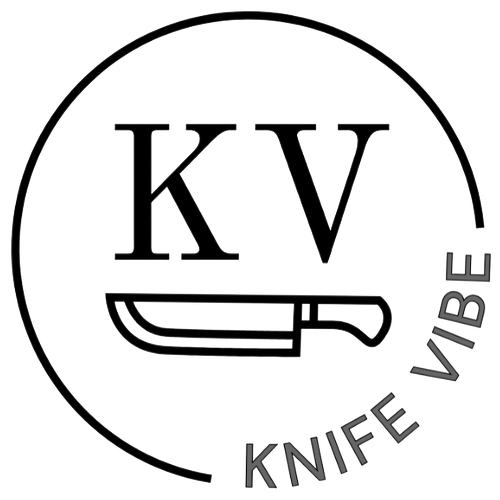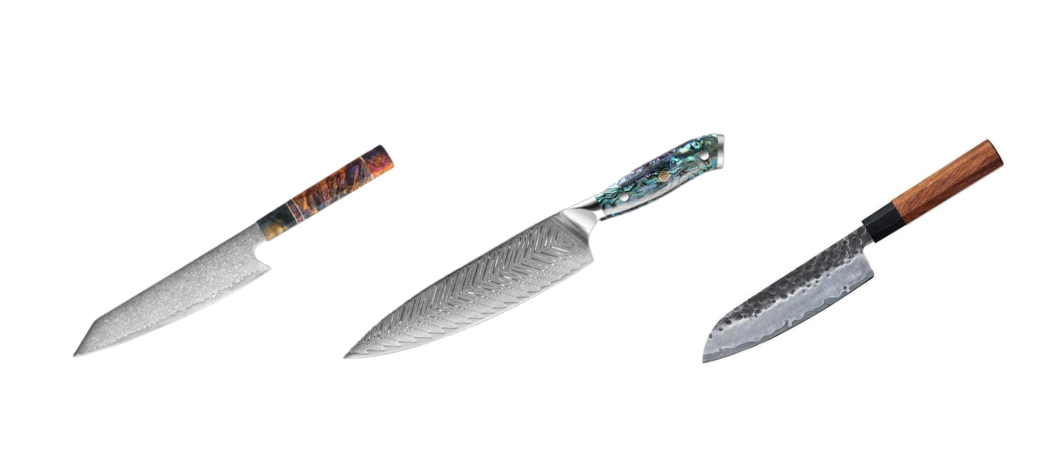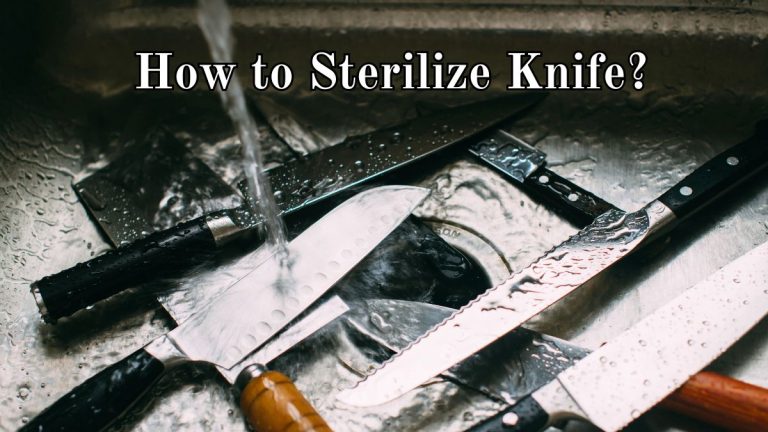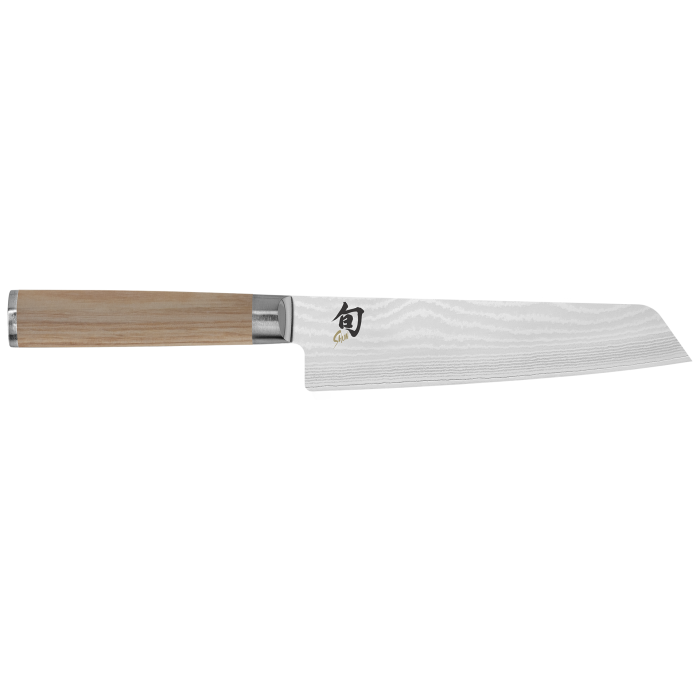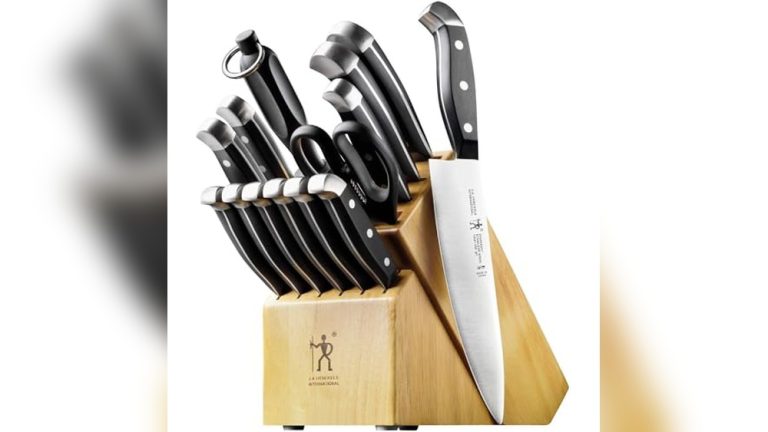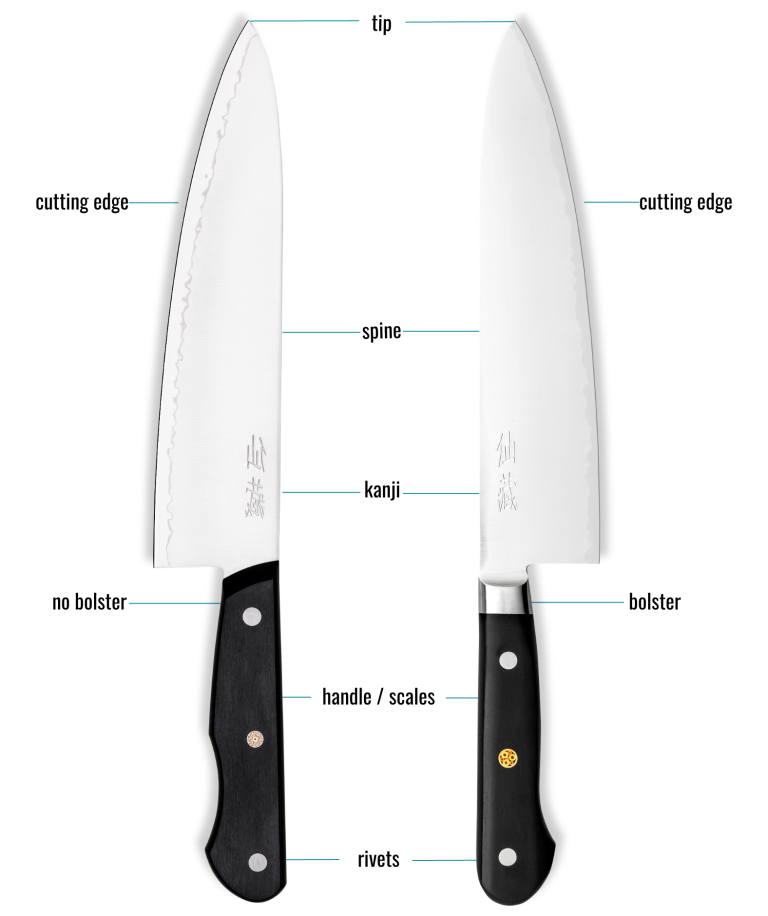Kiritsuke Vs Chef Knife: Which One Reigns Supreme?
In the world of cooking, knives are essential tools. Two popular options are the Kiritsuke and the Chef Knife.
Understanding their differences can help you choose the right one for your kitchen. The Kiritsuke knife, known for its versatility, combines the features of a traditional Japanese knife and a Yanagiba. It’s often used by skilled chefs for precise slicing and dicing.
On the other hand, the Chef Knife, a staple in many kitchens, is versatile and suitable for various tasks. It can chop, slice, and dice with ease. Comparing these two knives helps you understand their strengths and weaknesses. This way, you can pick the one that best suits your cooking style and needs. Let’s dive into the details and see how these knives stack up against each other.
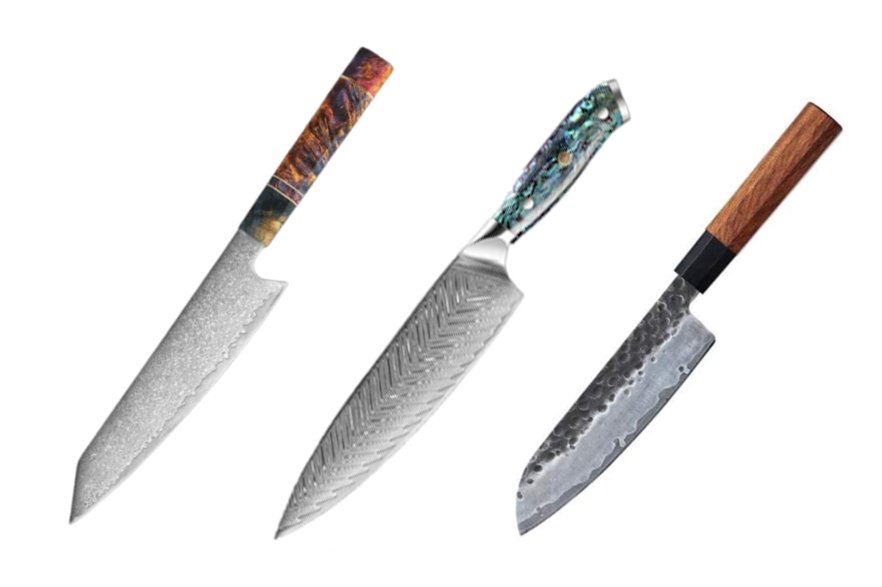
Credit: santokuknives.co.uk
Introduction To Kiritsuke And Chef Knife
In the world of culinary arts, knives are essential tools. Two popular types are the Kiritsuke and Chef Knife. Each has its own unique features and uses. Understanding the differences can help you choose the right one for your kitchen.
What Is A Kiritsuke?
The Kiritsuke is a traditional Japanese knife. It combines the features of the Yanagiba and Usuba knives. Yanagiba is used for slicing fish. Usuba is used for chopping vegetables. The Kiritsuke is versatile and can handle both tasks.
It has a long, straight blade with a slight curve at the tip. The blade is usually between 8 to 10 inches long. This knife is perfect for slicing and dicing. It can make precise cuts with ease.
| Feature | Details |
|---|---|
| Blade Length | 8 to 10 inches |
| Blade Shape | Straight with a slight curve |
| Primary Use | Slicing fish, chopping vegetables |
What Is A Chef Knife?
The Chef Knife is a staple in many kitchens worldwide. It is known for its versatility. The blade is wide and tapers to a point. This design makes it ideal for many tasks. You can chop, slice, and dice with it.
Chef Knives usually have blades that range from 6 to 12 inches. The most common length is 8 inches. They can handle both hard and soft ingredients. This makes them a go-to knife for many chefs.
| Feature | Details |
|---|---|
| Blade Length | 6 to 12 inches |
| Blade Shape | Wide, tapers to a point |
| Primary Use | Chopping, slicing, dicing |
Historical Background
Kiritsuke knives blend features of both the Japanese Yanagiba and Usuba knives. Chef knives, originating from Europe, are versatile kitchen tools.
The history of kitchen knives is fascinating. It reflects the evolution of culinary arts. Understanding the roots of Kiritsuke and Chef Knives offers insight into their unique qualities.Origins Of Kiritsuke
The Kiritsuke knife has a rich tradition in Japanese cuisine. It is a hybrid knife. It combines features of the Yanagiba and Usuba knives. The Yanagiba is used for slicing fish. The Usuba is perfect for cutting vegetables. Traditionally, only the executive chef uses the Kiritsuke. It symbolizes experience and mastery in the kitchen.Origins Of Chef Knife
The Chef Knife has European origins. It is the most versatile tool in Western kitchens. It dates back to the 17th century in France. The design evolved from butchers’ knives. These knives needed to handle various tasks. German and French styles are the most popular. The German style is heavier with a curved blade. The French style is lighter with a straighter edge. Both are essential in modern cooking. “`Design And Features
Choosing between a Kiritsuke and a Chef Knife can be challenging. Both knives have unique design and features that cater to different culinary needs. Understanding these differences can help in making a more informed decision.
Blade Shape And Length
The blade shape of a Kiritsuke is distinct. It has a pointed tip and a flat edge. This design is ideal for precision cutting and slicing. The blade length usually ranges from 8 to 10 inches. This length allows for versatile use in the kitchen.
On the other hand, a Chef Knife has a curved blade. This curve makes it perfect for rocking motions during chopping. The blade length varies from 6 to 14 inches. The longer length offers flexibility for different cutting tasks.
Handle Design
The handle design is another key difference. Kiritsuke knives often feature a traditional Japanese handle. This handle, known as a wa-handle, is lightweight and provides a comfortable grip. It enhances control during intricate cuts.
Chef knives, however, usually come with a Western-style handle. These handles are heavier and offer a secure grip. The weight balance between the blade and handle gives stability during chopping and slicing.
Here is a comparison table for easy reference:
| Feature | Kiritsuke | Chef Knife |
|---|---|---|
| Blade Shape | Pointed tip, flat edge | Curved blade |
| Blade Length | 8-10 inches | 6-14 inches |
| Handle Design | Wa-handle (Japanese) | Western-style handle |
Both Kiritsuke and Chef Knives have their own unique design and features. Understanding these can help in choosing the right knife for your culinary needs.
Usage And Versatility
In the culinary world, the choice of knife can greatly impact the cooking experience. Understanding the usage and versatility of different knives helps in making the right decision. Here, we compare two popular knives: the Kiritsuke and the Chef Knife.
Kiritsuke In The Kitchen
The Kiritsuke knife stands out for its unique shape and design. It combines the features of a Yanagiba and an Usuba knife. This makes it versatile yet specialized.
The long, straight blade of the Kiritsuke is perfect for slicing and dicing. It is especially useful for preparing Japanese cuisine. Chefs use it for slicing fish and cutting vegetables with precision. The flat edge allows for clean cuts, making it ideal for fine work.
However, the Kiritsuke requires skill and practice. It is not recommended for beginners due to its challenging handling. Expert chefs appreciate the control and finesse it offers.
Chef Knife Applications
The Chef Knife is a staple in kitchens worldwide. Its broad, curved blade makes it incredibly versatile. This knife excels in chopping, slicing, and dicing a variety of ingredients.
The Chef Knife is suitable for different tasks. It can handle meat, vegetables, and herbs with ease. The curved blade allows for a rocking motion, which is great for fast chopping.
Unlike the Kiritsuke, the Chef Knife is beginner-friendly. Its design supports easy handling and control. This makes it a favorite for both home cooks and professional chefs. The Chef Knife is known for its adaptability in various culinary tasks.
Here is a simple comparison table:
| Feature | Kiritsuke | Chef Knife |
|---|---|---|
| Blade Shape | Straight | Curved |
| Versatility | Specialized | General |
| Skill Level | Advanced | Beginner-Friendly |
Performance And Efficiency
When choosing between a Kiritsuke and a Chef Knife, performance and efficiency are key considerations. Both knives have unique features that impact their cutting precision, speed, and control. Understanding these differences helps you select the right tool for your kitchen tasks.
Cutting Precision
The Kiritsuke knife is known for its precise cuts. Its flat edge and sharp tip allow for clean, straight cuts. Ideal for slicing vegetables and fish. The Kiritsuke excels in tasks that need exactness.
In contrast, the Chef Knife offers versatility. Its curved blade makes it suitable for rocking motions. This design enables efficient chopping of herbs and mincing garlic. The Chef Knife’s versatility makes it a favorite in many kitchens.
Speed And Control
Speed and control are crucial in food preparation. The Kiritsuke knife provides excellent control due to its balanced weight. Chefs can achieve quick, even slices with minimal effort.
The Chef Knife is designed for speed. Its ergonomic handle and balanced blade allow for fast chopping and slicing. The curved edge facilitates smooth, continuous cutting motions. This makes the Chef Knife a go-to tool for busy kitchens.
| Feature | Kiritsuke Knife | Chef Knife |
|---|---|---|
| Cutting Precision | High, straight cuts | Versatile, rocking motions |
| Speed | Moderate | High |
| Control | Excellent balance | Ergonomic design |
Both knives have their strengths. The Kiritsuke excels in precision tasks. The Chef Knife offers speed and versatility. Choosing the right knife depends on your cooking style and needs.
Maintenance And Durability
When choosing between a Kiritsuke and a Chef Knife, understanding their maintenance and durability is crucial. Proper care ensures these knives perform well and last long. This section delves into essential aspects of maintaining these knives.
Sharpening Techniques
Sharpening a Kiritsuke requires skill. Its single bevel edge needs precise handling. Using a whetstone is recommended. Start with a coarse stone, then move to a finer one. Maintain a consistent angle to avoid damaging the blade.
A Chef Knife, usually double-beveled, is easier to sharpen. You can use a whetstone or a honing rod. Ensure you sharpen both sides evenly. This maintains the knife’s balance and sharpness.
Longevity And Care
Both Kiritsuke and Chef Knives benefit from proper care. Always hand wash and dry them immediately. Avoid dishwashers as they can dull and damage the blades.
Store knives in a knife block or on a magnetic strip. This prevents accidental nicks and maintains the edge. Regularly oiling the blade, especially for Kiritsuke, prevents rust and corrosion.
| Aspect | Kiritsuke | Chef Knife |
|---|---|---|
| Edge | Single Bevel | Double Bevel |
| Sharpening Method | Whetstone | Whetstone, Honing Rod |
| Ease of Sharpening | Requires Skill | Easier |
| Care | Hand Wash, Oil | Hand Wash |
Pros And Cons
Choosing the right knife can make a big difference in the kitchen. The Kiritsuke and Chef Knife each have their own strengths and weaknesses. Understanding these can help you pick the best tool for your needs. This section explores the pros and cons of each knife.
Advantages Of Kiritsuke
The Kiritsuke is a versatile Japanese knife. Here are its main advantages:
- Multi-functional: The Kiritsuke can cut fish and vegetables.
- Precision: Its pointed tip allows for detailed cuts.
- Unique shape: The Kiritsuke has a distinctive look that stands out.
- Long blade: This helps in slicing large pieces of food.
Advantages Of Chef Knife
The Chef Knife is a staple in many kitchens. Here are its main advantages:
- Versatile: The Chef Knife can handle most kitchen tasks.
- Comfortable grip: Many find the handle easy to hold.
- Durable: High-quality Chef Knives last a long time.
- Available in different sizes: You can choose the size that suits your needs.
Pros And Cons Comparison Table
| Feature | Kiritsuke | Chef Knife |
|---|---|---|
| Multi-functional | Yes | Yes |
| Precision | High | Moderate |
| Comfortable Grip | Moderate | High |
| Durability | High | High |

Credit: santokuknives.co.uk
Choosing The Right Knife
Choosing the right knife can be a game-changer in your kitchen experience. Both the Kiritsuke and Chef Knife have their unique features and benefits. Understanding what each knife offers can help you make an informed decision.
Factors To Consider
The first factor to consider is the type of food you usually prepare. If you often cut vegetables and fish, the Kiritsuke might be the better choice. Its flat edge is ideal for these tasks. For a variety of tasks, the Chef Knife offers more versatility.
Another factor is the knife’s weight and balance. A well-balanced knife reduces hand fatigue. The Kiritsuke is generally lighter, making it easier to handle for precise cuts. The Chef Knife, on the other hand, provides a robust feel suitable for heavy-duty tasks.
Personal Preferences
Your personal preference plays a big role. Some cooks prefer the traditional look and feel of the Chef Knife. Its curved blade allows for a rocking motion, which is great for chopping herbs and vegetables.
Others may favor the Kiritsuke for its unique design and specialized use. Its straight edge allows for clean, precise slices. This makes it perfect for sushi and sashimi preparation.
Hand size and grip comfort are also important. Test both knives to see which feels more comfortable. A knife should feel like an extension of your hand.
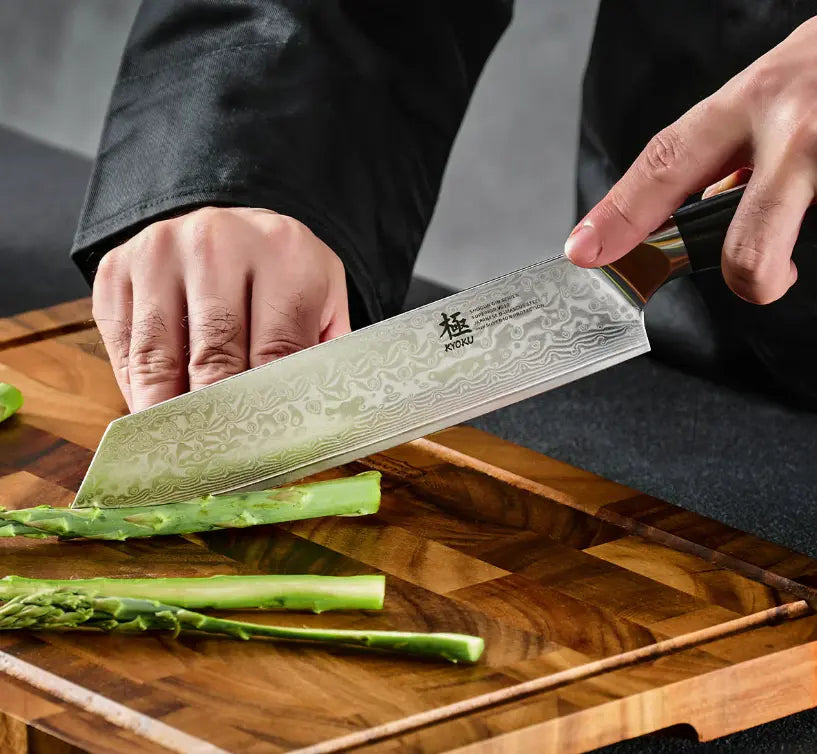
Credit: kyokuknives.com
Frequently Asked Questions
What Is A Kiritsuke Knife?
A Kiritsuke knife is a versatile Japanese chef knife. It combines features of the usuba and yanagiba knives. It’s ideal for slicing and chopping.
How Does A Kiritsuke Differ From A Chef Knife?
A Kiritsuke has a straighter edge and a pointed tip. Chef knives have a curved edge. This makes them better for rocking motions.
Which Knife Is Better For Vegetables?
Kiritsuke knives are excellent for precision vegetable cutting. Their flat edge allows for clean, straight cuts.
Can A Kiritsuke Replace A Chef Knife?
A Kiritsuke can replace a chef knife for many tasks. However, it may require more skill to use effectively.
Conclusion
Choosing between a Kiritsuke and a chef knife depends on your needs. Kiritsuke offers precision and versatility, ideal for delicate tasks. A chef knife is all-purpose, great for everyday cooking. Both knives have unique benefits. Consider your cooking style and preferences.
Try both and see what fits best. Remember, the right knife can enhance your culinary experience. Happy cooking!
